
The shortcuts to everything you need. We are here to help!
Today’s architects, project managers, contractors, and end-users require more than product specifications from manufacturers. An obligation towards public accountability calls for an adherence to a growing tripartite of codes, voluntary standards, and performance-based measures. It is here that MaxiForce, in line with up-to-date compliance observance, assists customers to stay on track and increase successful bidding. MaxiForce will provide one-on-one support to ensure your project conforms to all the right measures. Our entire product range is in compliance with all necessary specifications, standards and codes and, upon request, we provide mill production certificates and/or project design scenarios.
Codes
Codes have the force of law once they have been incorporated into a contract. They are typically revised every three years, and can be amended, relative to jurisdictional decisions, to make them more compatible for areas with varying ordinances. Building codes are the legal measures applied to buildings. Codes can incorporate standards and/or performance-based measures (see next section), but for the most part, model codes are prescriptive in nature.
MaxiForce has incorporated design and construction specifications into its bollards to meet the conditions of the:
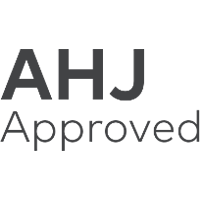
- International Fire Code (IFC) Section 503
- International Building Code (IBC) Section 1607.7.3
- Florida Building Code (FBC) Section 1618.5.3 *applies to hurricane zones
- American Association of State Highway and Transportation Officials (AASHTO) Section 2.7
- US Department of State (DOS) SD-STD-02.01 Vehicle Crash Standards
- American Society for Testing and Materials (ASTM) F2656-07 Vehicle Crash Standards
MaxiForce Collapsible and Light Removable Bollards are approved for fire lane use in many cities, townships, and municipalities by the local AHJ (Authority Having Jurisdiction).
Standards
Standards are arrived at by a consensus of industry based experts. They set the benchmark to which everything else is measured, thereby providing confidence, reliability, and compatibility in the marketplace. In the construction industry (as applied to MaxiForce bollards), standards address quality of materials, installation methods, classification, and design criteria. Standards may be voluntary or compulsory, such as when they are incorporated in a code or contract.
MaxiForce is often susceptive to the following standards:

The American Recovery and Reinvestment Act
(ARRA) of 2009, 48 CFR Part 5, sub-part 25.6—Buy American Act—relates to Solicitation Provisions and Contract Clauses and requires that iron, steel, and other manufactured goods used for a project for the construction, alteration, maintenance or repair of a public work must be produced or manufactured in the United States.

The Federal Public Transportation Law
49 U.S.C. Chapter 53, Title 49, Part 661—Buy America Requirements—necessitates that the grantee funds from the Federal Transportation Administration for the purchase of steel, and the use of iron be restricted to components and manufacturing processes having their origin in the United States.
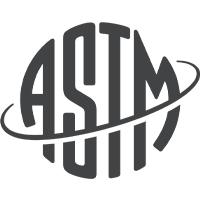
American Society for Testing and Materials
ASTM documentation of bollard steel/iron content as well as steel mill published certificates and test reports verifying the integrity of the steel (as required by the various ASTM steel standards noted in the product specifications) are available upon request.
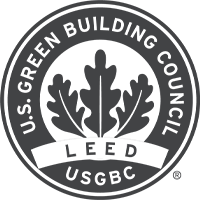
LEED Certification
For projects seeking LEED Certification, one Material Resource MR Credit 4.1 is awarded when 10 % of building materials are recycled based on total value of the project’s materials, and a second Material Resource MR Credit 4.2 is awarded when 20% of recycled materials are based on the total value of the project’s materials. In each case the recycled material content shall be composed of the sum of post-consumer content and one-half of the pre-consumer content.
LEED credits are also awarded based on the proximity of the project to the point of manufacture. One MR Credit 5.1 is awarded when 10% of building materials are manufactured regionally, within 500 miles of the project. A second MR Credit 5.2 is awarded when 20% of the building materials are manufactured, within 500 miles of the project.
LEED credits are awarded for a number of Sustainable Site (SS) qualities. These in turn have been coordinated with the 22 Department of Defense’s Minimum Anti-terrorism Standards for Buildings (UFC 4-010-01). MaxiForce bollards often contribute to fulfilling the requirements of both Sustainable Sites and DoD site protection. Our staff will advise clients on how best to use bollards to meet LEED and DoD site-related standards.
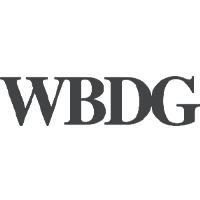
Whole Building Design Guide
The National Institute of Building Sciences’ remarkable WBDG Internet portal has now become the construction industry’s titular standard for private firms and government agencies. MaxiForce has led the industry in applying WBDG standards to bollard applications, from concept to performance-based design. So, when a customer purchases a MaxiForce bollard, we stand ready to show its systemic application to all eight WBDG Design Objectives.
Performace-Based Design
Performance-based design (PBD) is the new kid on the block when it comes to product design. It differs from the prescriptive qualities of a code in that it requires measurements of the outcome of a code for those affected by it. As in the case of MaxiForce’s apparatus-collapsible bollards, “time-to-access” a fire lane expedites compliance with NFPA’s standard of a two-minute set-up time.
For more information or specific requests in regard to MaxiForce Compliance with Industry Codes & Standards,
please don’t hesitate to contact us on [email protected]
This might interest you







.svg) +1 (410) 552 9888
+1 (410) 552 9888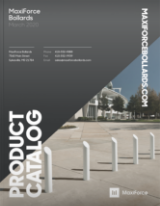





.svg)